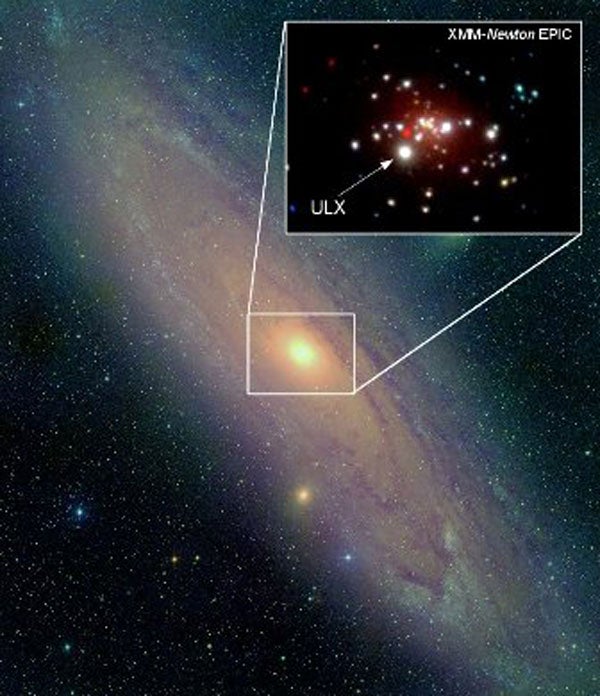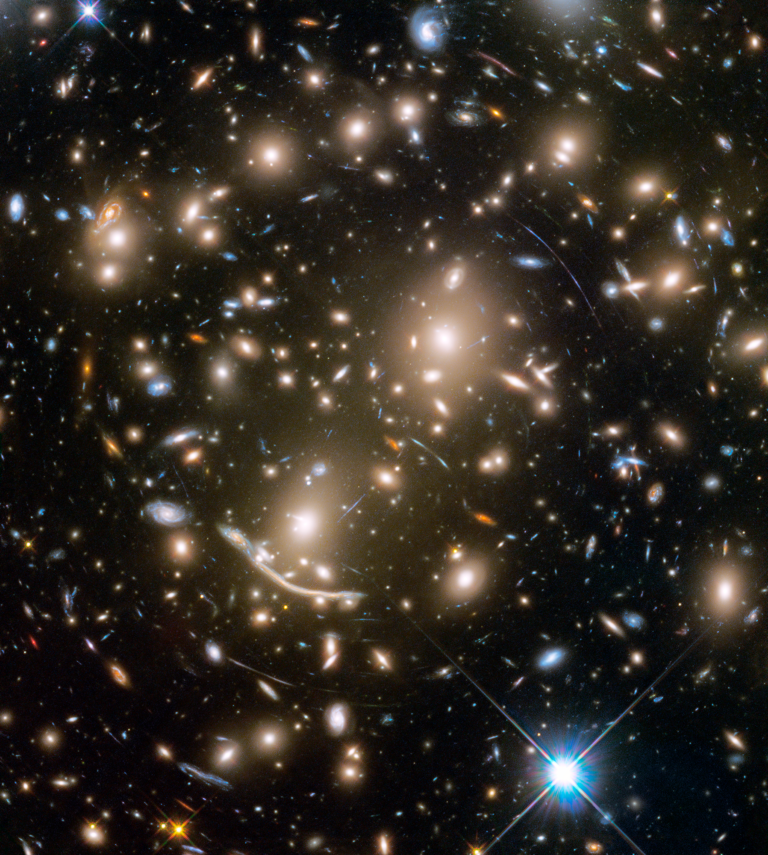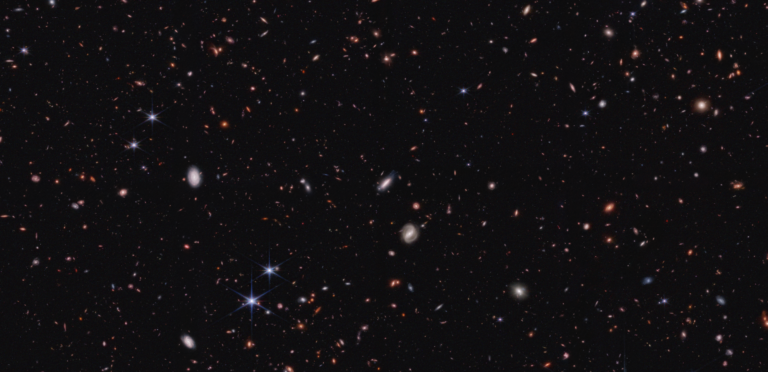An international team of scientists, led by Matt Middleton of Durham University, England, analyzed the ultraluminous X-ray source (ULX), which was originally discovered in the Andromeda Galaxy (M31) by NASA’s Chandra X-ray Observatory.
Many ULXs are too far away for astronomers to study, but the relatively close proximity of Andromeda to the Milky Way — around 2.5 million light-years — gave the team the opportunity to analyze the phenomenon.
The researchers say their study could begin to answer the question of what causes ULXs. Some scientists believe they are caused by relatively small black holes, a few times the mass of our Sun. These black holes rapidly pull in gas and dust, which form an “accretion disk” that heats up and causes the material to emit X-rays.
Other scientists say ULXs are caused by material being dragged in by an intermediate-sized black hole formed from the merger of many stellar-mass black holes — about 1,000 times bigger than the Sun.
The Durham-led findings link the ULX spotted in Andromeda to a normal stellar black hole formed after a massive star exploded as a supernova.
“ULX sources are still pretty exotic,” said Middleton. “But our work shows that at least some are linked to the normal black holes left behind after the death of massive stars — objects that are found throughout the universe — and the way they drag in surrounding material. The ULX in Andromeda flared up because of the black hole’s voracious appetite for new material.”
Using data from Chandra, the XMM-Newton X-ray observatory, the Swift gamma-ray observatory, and the Hubble Space Telescope, the research team was able to watch a sharp decline in the outburst from the ULX that took place over the next few months.
This decline had not been seen in any ULX before, but it is common in stellar-mass X-ray binaries in the Milky Way where a normal star is in close orbit around a black hole. Measurement of energy emissions from the ULX also allowed the team to rule out low rates of accretion that would be expected from an intermediate-mass black hole.
They concluded that the Andromeda ULX had the mass of a large star, and in this case, about 13 times the mass of the Sun.
“We would like to follow up this work by watching another outburst from the Andromeda ULX,” said Middleton. “The problem is that these are likely to happen only every few decades so we could be in for a long wait before this source erupts again.”
The team hopes that the ongoing monitoring of Andromeda by orbiting X-ray observatories may find other ULXs in the same galaxy, giving them another chance to test their theory. “If we do manage to spot another ULX outburst in Andromeda, it will be a big help in understanding the extreme behavior of black holes and the way they pull in matter — something of great importance in shaping the wider universe,” said Middleton.










